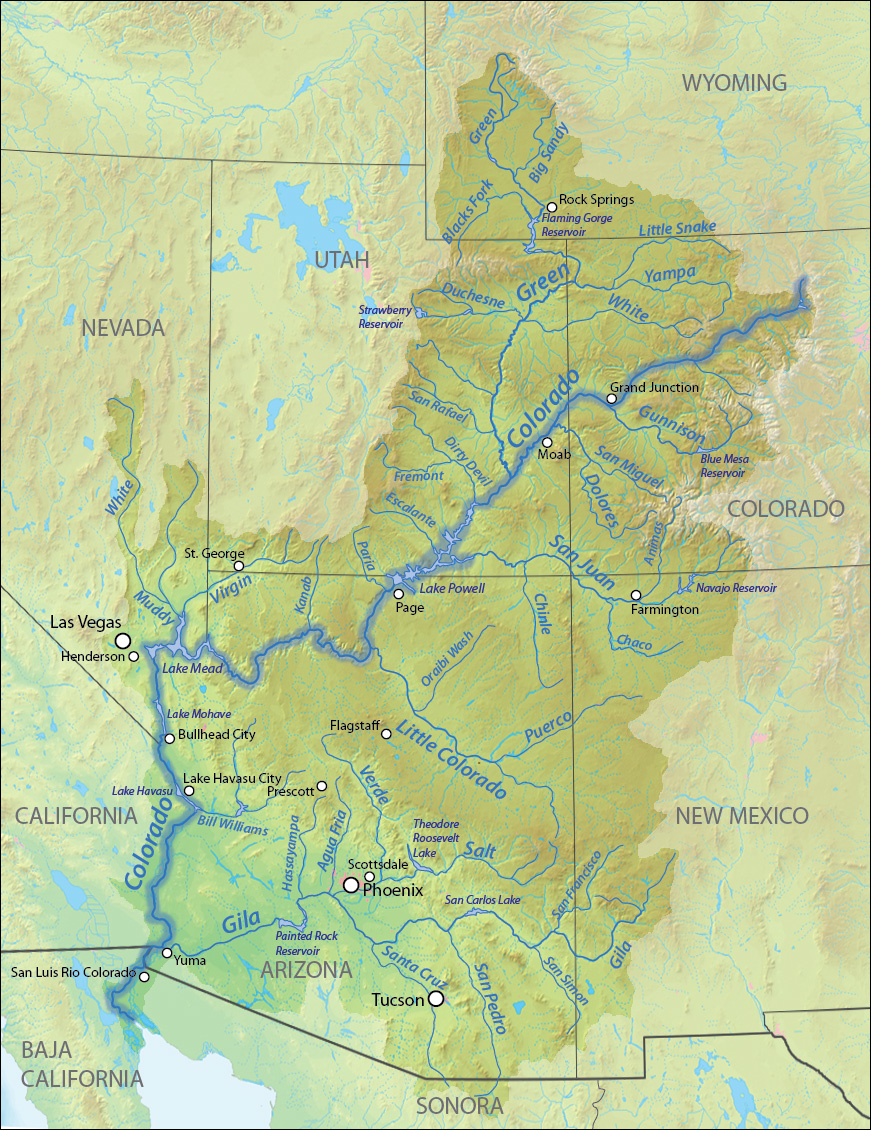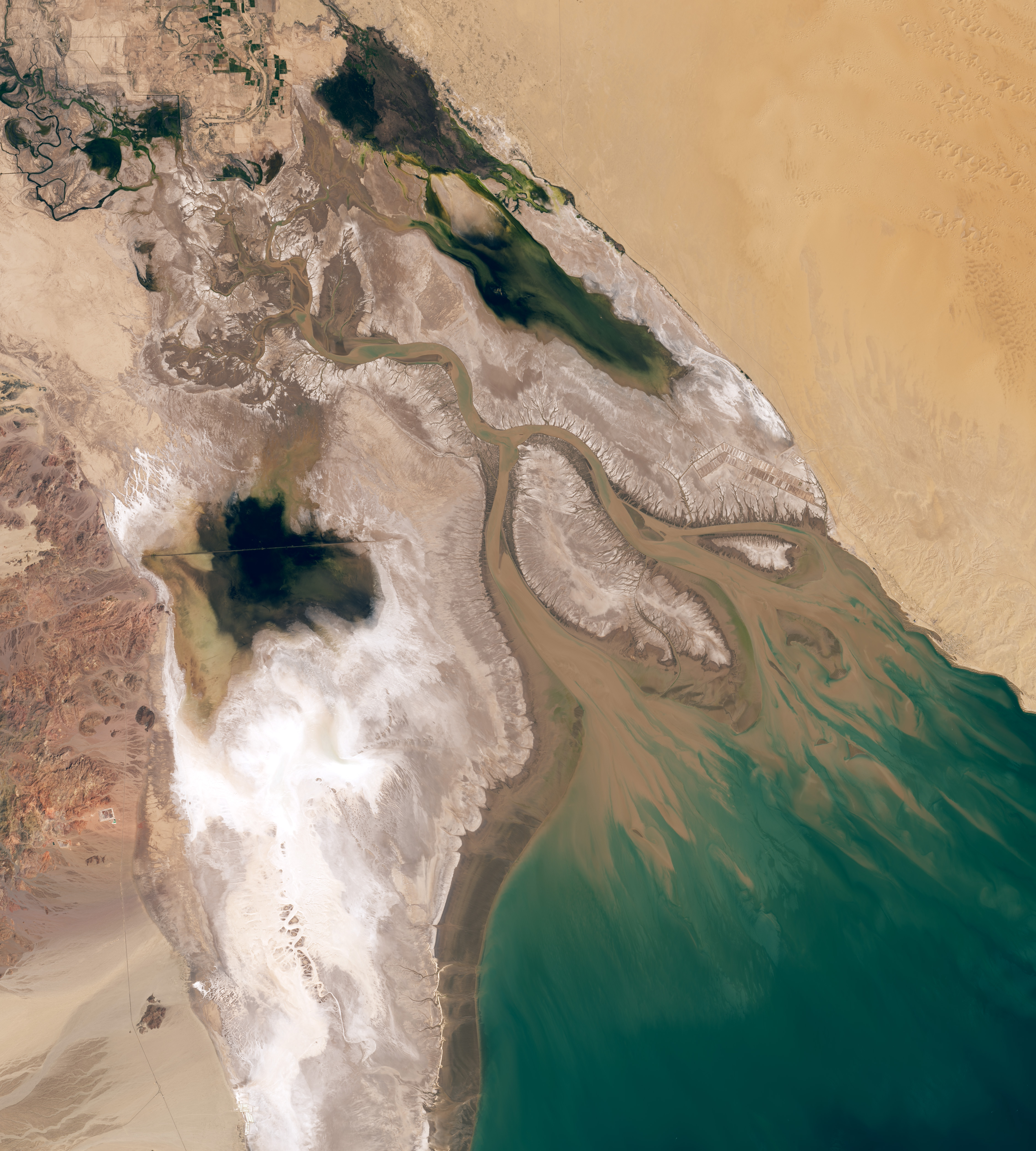As Colorado River Dries, the U.S. Teeters on the Brink of Larger Water Crisis
Link to tweet
?s=20&t=aiBLdXLxEu7a0C0L6WWRpg
As Colorado River Dries, the U.S. Teeters on the Brink of Larger Water Crisis
The megadrought gripping the western states is only part of the problem. Alternative sources of water are also imperiled, and the nation’s food along with it.
https://www.propublica.org/article/colorado-river-water-shortage-jay-famiglietti
by Abrahm Lustgarten Aug. 25, 5 a.m. EDT
The western United States is, famously, in the grips of its worst megadrought in a millennium. The Colorado River, which supplies water to more than 40 million Americans and supports food production for the rest of the country, is in imminent peril. The levels in the nation’s largest freshwater reservoir, Lake Mead, behind the Hoover Dam and a fulcrum of the Colorado River basin, have dropped to around 25% of capacity. The Bureau of Reclamation, which governs lakes Mead and Powell and water distribution for the southern end of the river, has issued an ultimatum: The seven states that draw from the Colorado must find ways to cut their consumption — by as much as 40% — or the federal government will do it for them. Last week those states failed to agree on new conservation measures by deadline. Meanwhile, next door, California, which draws from the Colorado, faces its own additional crises, with snowpack and water levels in both its reservoirs and aquifers all experiencing a steady, historic and climate-driven decline. It’s a national emergency, but not a surprise, as scientists and leaders have been warning for a generation that warming plus overuse of water in a fast-growing West would lead those states to run out.
I recently sat down with Jay Famiglietti, the executive director of the Global Institute for Water Security at the University of Saskatchewan, to talk about what comes next and what the public still doesn’t understand about water scarcity in the United States. Before moving to Canada, Famiglietti was a lead researcher at NASA’s water science program at the Jet Propulsion Laboratory in Pasadena, California, and a member of the faculty at the University of California, Irvine. He pioneered the use of the Gravity Recovery and Climate Experiment satellites to peer into the earth’s mass and measure changes in its underground water supplies. The Colorado River crisis is urgent, Famiglietti said, but the hidden, underground water crisis is even worse. We talked about what U.S. leaders either won’t acknowledge or don’t understand and about how bad things are about to get.
Our conversation has been edited for length and clarity.
Let’s start with the Colorado River because it’s in the news. The federal government has put some extraordinary numbers out there, suggesting water users cut between 2 and 4 million acre-feet of water usage starting this year — roughly 40% of the entire river’s recent flow. How could that possibly happen?
It’s going to be really hard. We’re looking at drastically reduced food production and the migration of agriculture to other parts of the country and real limits on growth, especially in desert cities like Phoenix. My fear is that groundwater will, as usual, be left out of the discussion — groundwater is mostly unprotected, and it’s going to be a real shit show.
Remind us how that happens. States and farmers cut back on the Colorado River, and California and Arizona just start pumping all the water out of their aquifers? .............................
If they don't voluntarily reduce water usage somehow, they are going to end up with no choice in the matter since the water won't be there anyway... This will happen regardless of what they do, unless weather changes drastically and all predictions on climate change are in error....
Jim__
(14,088 posts)
dalton99a
(81,635 posts)
Image courtesy of Konikow / U.S. Geological Survey
U.S. Groundwater Depletion, 1900-2008: The United States has lost enough groundwater to fill Lake Erie twice. The biggest declines occurred in the Southern Great Plains, the Mississippi River Delta, and the Central Valley of California. Two aquifer systems in the Pacific Northwest show net increases since 1900, but those trends have reversed in the last few decades.
NullTuples
(6,017 posts)Despite all the talk about human brains, we are not a smart species when it comes to long term planning. Our evolution was for short term survival. We're good at on-the-spot predictions of what is just about to happen & coming up with alternative actions.
For 100 years in CA's Central Valley land owners have had to repeatedly dig deeper and deeper wells. They knew what was happening, from one generation to the next. I would assume the other map locations are similar in proportion to how long the land has been in use.
Aquifers take *five, maybe ten thousand* of years to fill; we depleted them in a century. It's similar to how we released tens of millions of years of sequestered carbon into the atmosphere in 300 years. And in fact, the two are connected. In California we depended on the ice/snow pack 6-7,000 feet up the Sierra Nevada mountain range to store water for us through the summer. The climate crisis has resulted in yearly snowfall and snowpack that's only a fraction of what it once was. Instead, it now all comes as rain and the mountain tops are dry by late spring. The slow melt was what replenished the Central Valley aquifers; now most of it leaves the mountains as surface runoff and exists into the ocean early in the year.

We DO have the ability to adapt and change our behaviors! But it takes the will to do so and forgo quick, easy and financially or politically more profitable solutions.
Here in Sonoma County, CA, the county water providers are planning to use the depleted underground aquifer as a massive storage lake by pumping winter rains into it when water is available in the winter. It's expensive, it's inefficient, but that's where we are as a planet. 100's of millions of people won't be so lucky.
